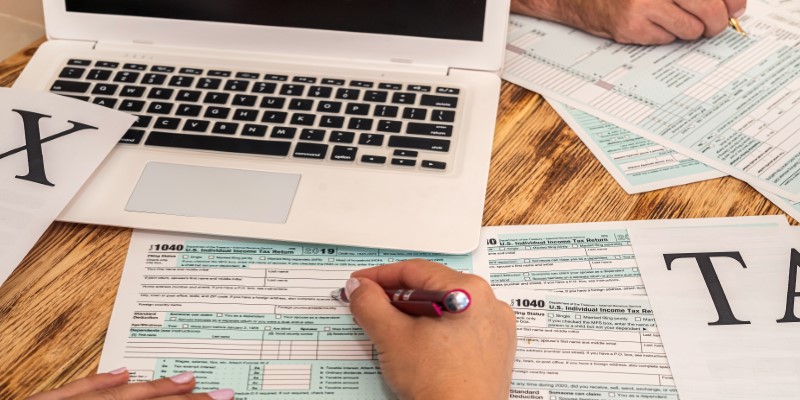
Do you ever feel as though you're working through a challenging problem when you deal with financial terms? That feeling is not unique to you as a business owner, and it won't go away. Two terms that may stick out among the various financial terms you've undoubtedly seen are "book depreciation" and "tax depreciation."
Although they are essential to tax planning and financial reporting, understanding their subtleties can be intimidating. But there's no reason to worry. In this article, we're deconstructing the terms and condensing these intricate ideas into manageable, bite-sized chunks of knowledge. It's possible that comprehending these phrases won't be as difficult as it first appears.
Accounting Depreciation: What Is It?

A company's allocation of the cost of an intangible good over the asset's useful life is called accounting depreciation or book depreciation. Principles and rules of accounting like US GAAP and IFRS drive the estimation of accounting depreciation. Recall that depreciation is an intangible asset. Put otherwise, depreciation expenditure does not accurately reflect a company's cash flow.
Depreciation expenditure is still included on the company's financial accounts even when it is not cash-based. The income statement is where a corporation documents its depreciation expenditures. As a result, this non-cash item eventually lowers the net income that a business reports.
Furthermore, the majority of accounting rules mandate that businesses reveal their cumulative depreciation on their profit or loss sheet. The impact of depreciation on the overall worth of the company's fixed assets as shown on the balance sheet is shown by the cumulative depreciation.
There are several methods for calculating accounting depreciation. The two most popular techniques for calculating depreciation are the accelerated and straight-line approaches. The simplest and most popular depreciation technique is straight-line depreciation. It evenly spreads the cost of depreciation throughout the course of the asset's useful life.
On the other hand, accelerated depreciation techniques enable the deduction of larger depreciation costs in the asset's initial useful life periods and lower depreciation costs in its later periods. The twofold decreasing depreciation technique is an illustration of the increased depreciation method.
Comprehending Tax Deprecation

In contrast, tax depreciation is used for taxation reasons and is often applied more aggressively than book depreciation. Tax depreciation, which is governed by guidelines developed by the Australian Taxation Office (The development of ATO), enables companies to swiftly recoup the cost of an asset, therefore lowering taxable incomeespecially in the initial phases of an asset's existence. This indicates that tax depreciation enables a business to save a significant amount of money on taxes.
ATO incentives such as the Rapid Asset Write-Off are a glaring illustration of the overbearing nature of tax depreciation. This regulation offers significant upfront tax savings by allowing instant deductions of completely of the appraised worth of some assets under certain circumstances. A corporation might optimize these kinds of tax benefits if its fixed-income asset list was based only on tax regulations.
Distinctions Between Tax and Book Depreciation
There are several clear distinctions between the meanings of tax and book depreciation:
The purpose of book depreciation is to assist firms represent their real worth and profitability over time through internal financial reporting. However, tax depreciation is applied to income taxes and has a direct impact on the tax liability of a corporation.
Calculation:
The probable lifespan of an asset, as established by the company's own evaluations or industry standards, is normally the basis for book depreciation calculations. The ATO establishes the guidelines that are used to compute tax depreciation.
Depreciation Rate:
Book degradation evenly or methodically distributes an asset's cost over the course of its useful life. However, aggressive depreciation is frequently permitted under tax depreciation, which can result in significant tax savings in the initial years of an asset's life.
ATO Incentives:
Tax depreciation's compatibility with ATO tax incentives is a crucial component. For instance, the Instant Capital Write-Off dramatically lowers taxable income by allowing the instant exclusion of fully the appraised worth of some assets.
The "timing" of whether the cost of an item of property will appear as amortisation expenditure on the accounts of a business versus the expense for depreciation on the company's income tax return is often the variation between book decay and tax depreciation. As a result, the depreciation expenditure for each year will probably change, but the sum of what is spent on depreciation for an asset across all of the years will probably equal the same amount.
Some individuals comment, "Oh, this business has a pair of books," since they don't understand the distinction between tax and book depreciation. In actuality, the business must: 1) keep depreciation documents for the matching principle-based depreciation on financial statements and 2) keep records for the IRS-rules-based depreciation on tax returns.
Furthermore, the idea of depreciation applies to tax and accounting procedures. The price of an immovable asset divided over the course of its period of use and recognized as a business expense is known as depreciation in accounting. Depreciation costs are deducted from sales in order to determine net income for the business.
The tax authorities in several countries release guidelines that include comprehensive descriptions of the different asset classifications. The life expectancies and corresponding depreciation computation methodologies for each kind of asset may be specified in the manuals. The capital expenditure Cost Allowance (CCA) guide, for instance, is published by the CRA (Canada Revenue Agency), and lists several asset types along with their corresponding depreciation rates. The Internal Revenue Service, better known as the IRS, in the US, releases a comparable property depreciation guide.
The Bottom Line!
In company finance, book retirement and tax retirement are two important ideas with different applications. The latter lowers taxable income, whereas the former is utilized for internal analysis to monitor an asset's performance.
Tax depreciation impacts your income tax returns, whereas book depreciation affects how fixed assets show on financial accounts. Guidelines for estimating and reporting tax depreciation allowances are available from the ATO. It is necessary to stay current with these in order to file taxes accurately.
To be eligible for a tax deduction, a competent quantity surveyor must provide you with a tax depreciation schedule. Applying both depreciation techniques correctly is essential for making well-informed decisions about budgeting, tax compliance, and business operations.




